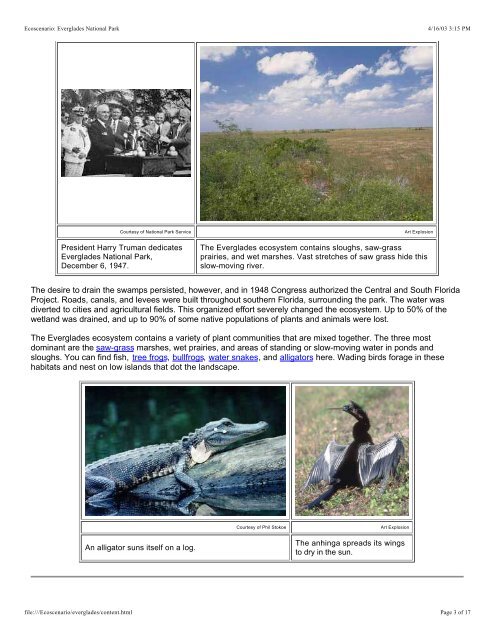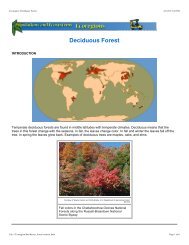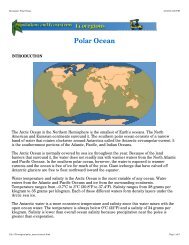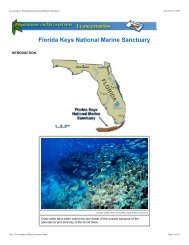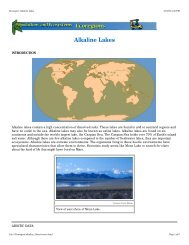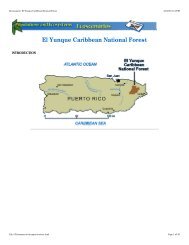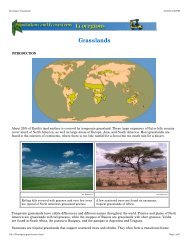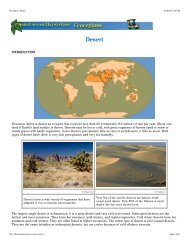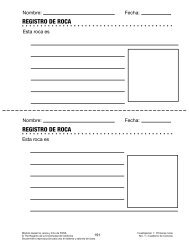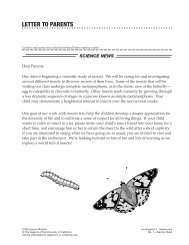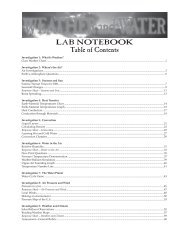Ecoscenarios Combined - FOSSweb
Ecoscenarios Combined - FOSSweb
Ecoscenarios Combined - FOSSweb
You also want an ePaper? Increase the reach of your titles
YUMPU automatically turns print PDFs into web optimized ePapers that Google loves.
Ecoscenario: Everglades National Park<br />
4/16/03 3:15 PM<br />
Courtesy of National Park Service<br />
President Harry Truman dedicates<br />
Everglades National Park,<br />
December 6, 1947.<br />
Art Explosion<br />
The Everglades ecosystem contains sloughs, saw-grass<br />
prairies, and wet marshes. Vast stretches of saw grass hide this<br />
slow-moving river.<br />
The desire to drain the swamps persisted, however, and in 1948 Congress authorized the Central and South Florida<br />
Project. Roads, canals, and levees were built throughout southern Florida, surrounding the park. The water was<br />
diverted to cities and agricultural fields. This organized effort severely changed the ecosystem. Up to 50% of the<br />
wetland was drained, and up to 90% of some native populations of plants and animals were lost.<br />
The Everglades ecosystem contains a variety of plant communities that are mixed together. The three most<br />
dominant are the saw-grass marshes, wet prairies, and areas of standing or slow-moving water in ponds and<br />
sloughs. You can find fish, tree frogs, bullfrogs, water snakes, and alligators here. Wading birds forage in these<br />
habitats and nest on low islands that dot the landscape.<br />
Courtesy of Phil Stokoe<br />
Art Explosion<br />
An alligator suns itself on a log.<br />
The anhinga spreads its wings<br />
to dry in the sun.<br />
file:///Ecoscenario/everglades/content.html<br />
Page 3 of 17


